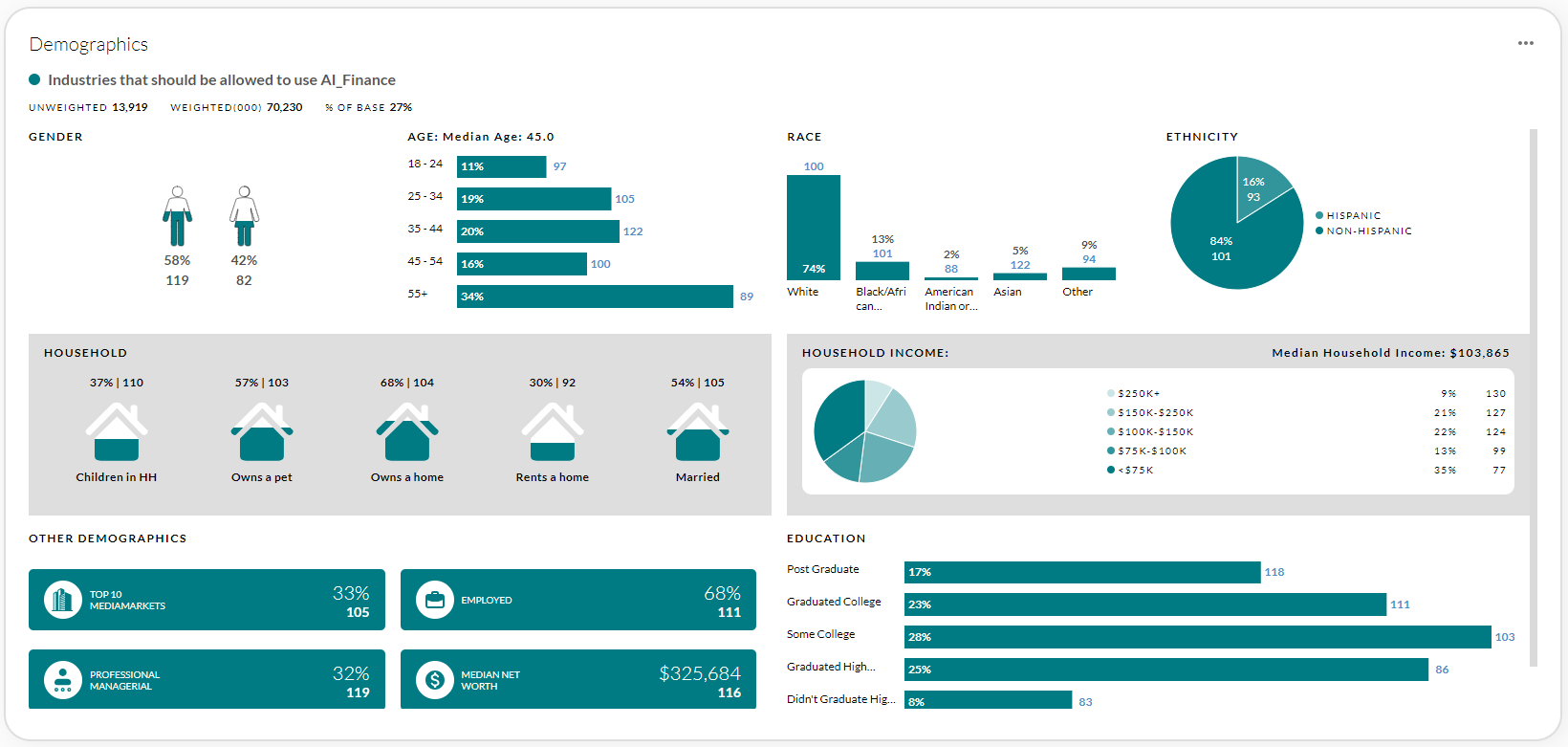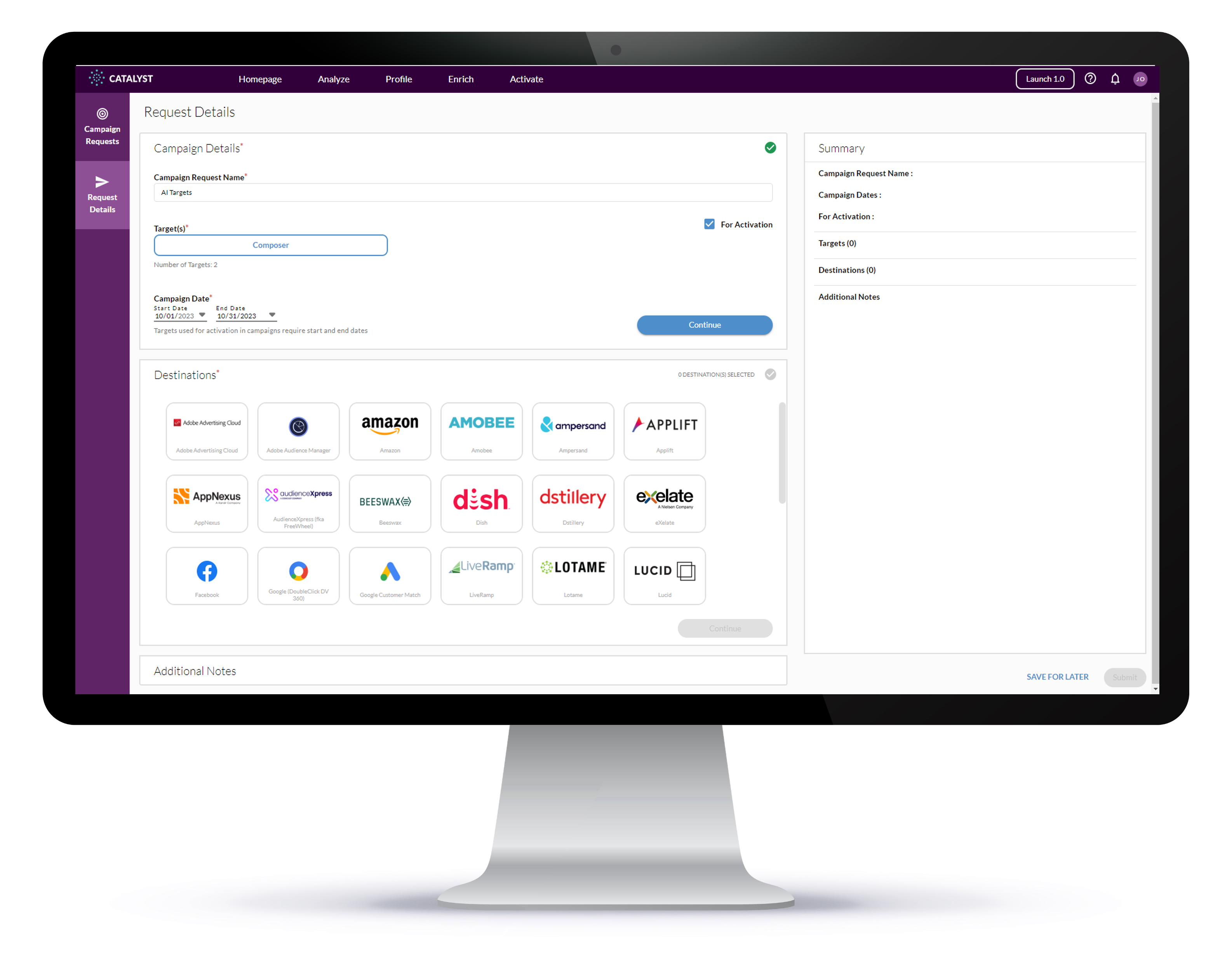Exploring the Motivations Behind AI Use
Traditionally, in market research, we look at multiyear trends, such as the adoption of sports streamers and the growth of podcasts. But when it came to AI, our look-back window was less than a year. And what a year it has been! OpenAI was the first company to release a beta of their AI tool (ChatGPT), which came out at the end of November. Six months later, ChatGPT, BingAI, and Google’s Bard had not only released public versions of their AI tools, but they were also available as phone applications via the Apple and Android operating systems. AI has come to dominate the news cycle, caused congressional hearings, moved stock markets, and maybe even started a new AI gold rush in the technology industry.
The Growth of AI Usage
In May of 2023, 55% of adults had heard of one or more big AI tools, and 28% had used one. By August, 65% of adults had heard of one of the big AI tools, and 40% had used one. The growth in AI usage has come from women, who now make up 42% of users, up from 37% just a few months earlier. Boomers make up 15% of AI users, up from 10% just three months prior. In May, Gen Z and Millennials, who comprise 48% of the population, accounted for 74% of AI users. Now, they account for 66% as the user pools expand.
Embracing AI
Gen Z and Millennials are the most likely to agree that AI tools are safe to use (59% and 65%, respectively). Boomers are the least likely to agree, with only 40% agreeing AI tools are safe.
This difference in opinion is likely due to the different experiences of these generations with technology. Gen Z and Millennials have grown up with home automation and voice assistants such as Siri, Alexa, and Google Assistant and likely view technology as an extension of themselves. Thus, they might be more likely to trust AI than previous generations, who grew up with films such as 2001: A Space Odyssey and The Terminator, which showed AI and technology running amok. Gen Z and Millennials are also more likely to embrace AI technology in the workplace. 66% of Gen Z and 68% of Millennials agree they are open to using AI technology. In contrast, only 43% of Boomers agree with this statement. Despite their enthusiasm for AI, 75% of Gen Z and Millennials agree that they are worried about how AI will affect society.
Those most at risk from AI are the most likely to welcome it.
Per the Organization for Economic Co-operation and Development (OECD), “Occupations in finance, medicine and legal activities which often require many years of education, and whose core functions rely on accumulated experience to reach decisions, may suddenly find themselves at risk of automation from AI,” In looking at openness to AI, we found respondents who work in legal fields (index 131) and those with management, business, and financial operations roles (index 130) were most likely to agree that AI should play a greater role in their daily lives. When we look at income, respondents with household incomes of $150,000 or more were 25% more likely than other adults to agree that AI plays a greater role in daily life, while those making $40,000 a year were 20% less likely. [Index 125 / 80]. When asked about openness to using AI in the workplace, respondents in the legal field were 19% more likely, and those in the marketing/advertising were 17% more likely than the average adult.
Among adults, 39% noted AI should be used in scientific research, followed by 34% for education and 31% in healthcare. Men were far more agreeable than women across all categories. When we cross the industries by age, they become more nuanced. In the 18 to 34 age group, 38% noted AI should be allowed in education (index, 111), and 26% think it should be allowed in the media/news industries (index, 115). In comparison, 35- to 49-year-olds overindex in agreeing AI should be allowed in the education, finance, legal/judicial, and civil service industries. Respondents 65+ agreed to AI being used in medical/healthcare, agriculture, and scientific research. When we consider what people ‘know,’ these attitudes toward industries might not be all that surprising. Younger generations are closer to education as they just finished school, middle-aged individuals focus more on finances and building communities, and older generations are likely more focused on healthcare.
AI has multiple use cases across a variety of industries. AI is used in medicine and healthcare for diagnostics, such as screening X-rays for diseases like tuberculosis and developing new drug discoveries. In agriculture/farming, AI can make irrigation systems more efficient or assist in the automation of tasks such as harvesting and sorting, which could increase crop yield. In financial services, banks and other financial institutions can potentially use AI for risk management, fraud reduction, personalization, algorithmic trading, and enhanced data analysis, among others.
Given the promises of AI and its growing adoption within the financial services space, let's take a deeper dive into those adults who approve of the use of AI in the financial services industry. We can see that they are more likely to have a higher household income, be employed (especially in professional/managerial positions), with above average education, net worth, and home ownership -- overall a valuable and lucrative segment to target through activation.

If you are looking to reach these AI-forward adults, you can activate these audiences using the MRI-Simmons ACT tool – and fulfill them to any DMP, DSP, SSP, or addressable media.

As always, MRI-Simmons is keeping an eye on trends in technology and other spaces, to enable our clients to get ahead of the curve. As AI continues to evolve, we’ll monitor the space and report new attitudes and behaviors in the coming months.
To learn more about MRI-Simmons' Trending Topics Study, or how you can activate audiences with our activation tool ACT, contact us today!



